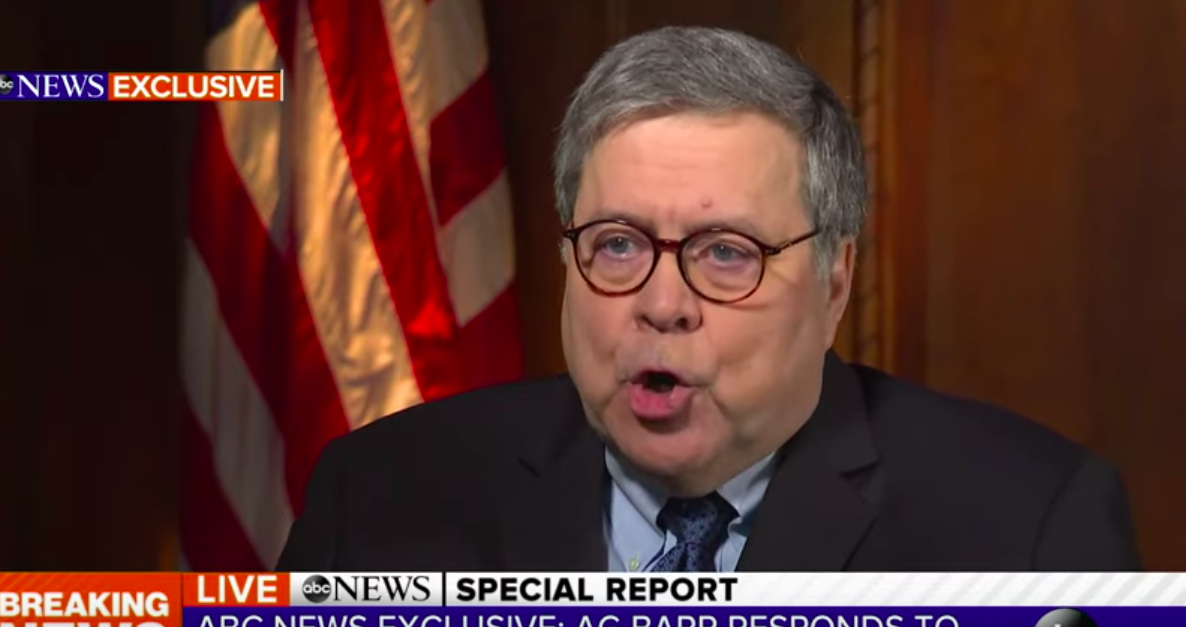
A federal appellate court in Washington, D.C. on Tuesday cleared the way for the Department of Justice to resume its execution initiative, voting 2-1 to lift a lower court’s November ruling prevented the policy from taking effect.
The three-judge panel issued an 88-page per curiam decision, meaning each judge’s vote was based on different legal reasoning, but ultimately ruling in favor of allowing the DOJ to resume executions.
The appeal arose from the consolidated case of several death-row inmates who challenged Attorney General William Barr’s revised federal execution protocols providing for the use of pentobarbital in lethal injections as violating the Federal Death Penalty Act (FDPA), which mandates that executions be implemented “in the manner prescribed by the law of the State in which the sentence is imposed.”
The lower court interpreted the FDPA as requiring the federal government to adhere not only to a state’s choice in execution method, but also to all subsidiary details of its execution protocols. U.S. Circuit Judges Gregory Katsas and Neomi Rao, both of whom were appointed by President Donald Trump, rejected that reasoning.
Judge Katsas concluded that the FDPA regulations only applied to a state’s “top-line choice” among execution methods, “such as the choice to use lethal injection instead of hanging or electrocution.”
“All indicators of the FDPA’s meaning—statutory text, history, context, and design—point to the same conclusion,” Katsas wrote. “The FDPA requires federal executions to follow the method of execution provided by the law of the state in which the sentence is imposed, but it does not require federal executions to follow the ‘additional procedural details’ invoked by the district court.”
Judge Rao concluded that the FDPA also requires the federal government to follow execution procedures set forth in state statutes and regulations, but not execution procedures set forth in less formal state execution protocols, allowing the federal government to depart from State procedures as necessary.
“[T]he FDPA requires the federal government to apply state law—that is, statutes and formal regulations—at whatever level of generality state law might be framed,” Rao wrote. “Where state law is silent, the federal government has discretion to choose whatever lawful execution procedures it prefers.”
In a dissent, Judge David Tatel, an appointee of President Bill Clinton, said his colleagues were wrong in disregarding state protocols.
“In my view, section 3596(a), best understood, requires federal executions to be carried out using the same procedures that states use to execute their own prisoners—procedures set forth not just in statutes and regulations, but also in protocols issued by state prison officials pursuant to state law. Because the federal protocol, on its face, takes no account of these procedures, it is contrary to section 3596(a), and I would vacate it,” he wrote, adding, “had Congress intended to authorize the Attorney General to adopt a uniform execution protocol, it knew exactly how to do so.”
Cate Stetson, a partner at the Hogan Lovells law firm (which represents one of the plaintiffs), said in a statement obtained by Law&Crime that the court’s decision will allow the federal government to execute prisoners without meaningful judicial review.
“The district court’s injunction was aimed at preventing the government from ‘short-circuiting legitimate judicial process’ and serving the public interest by ‘attempting to ensure that the most serious punishment is imposed lawfully,’” Stetson said in a statement following the decision. “Without action by the full court, the panel’s splintered decision will allow the government to execute prisoners even while serious questions remain unanswered about the legality of the government’s execution procedures under federal law.”
See below for full decision:
DC Execution Decision by Law&Crime on Scribd
[image via ABC News screengrab]